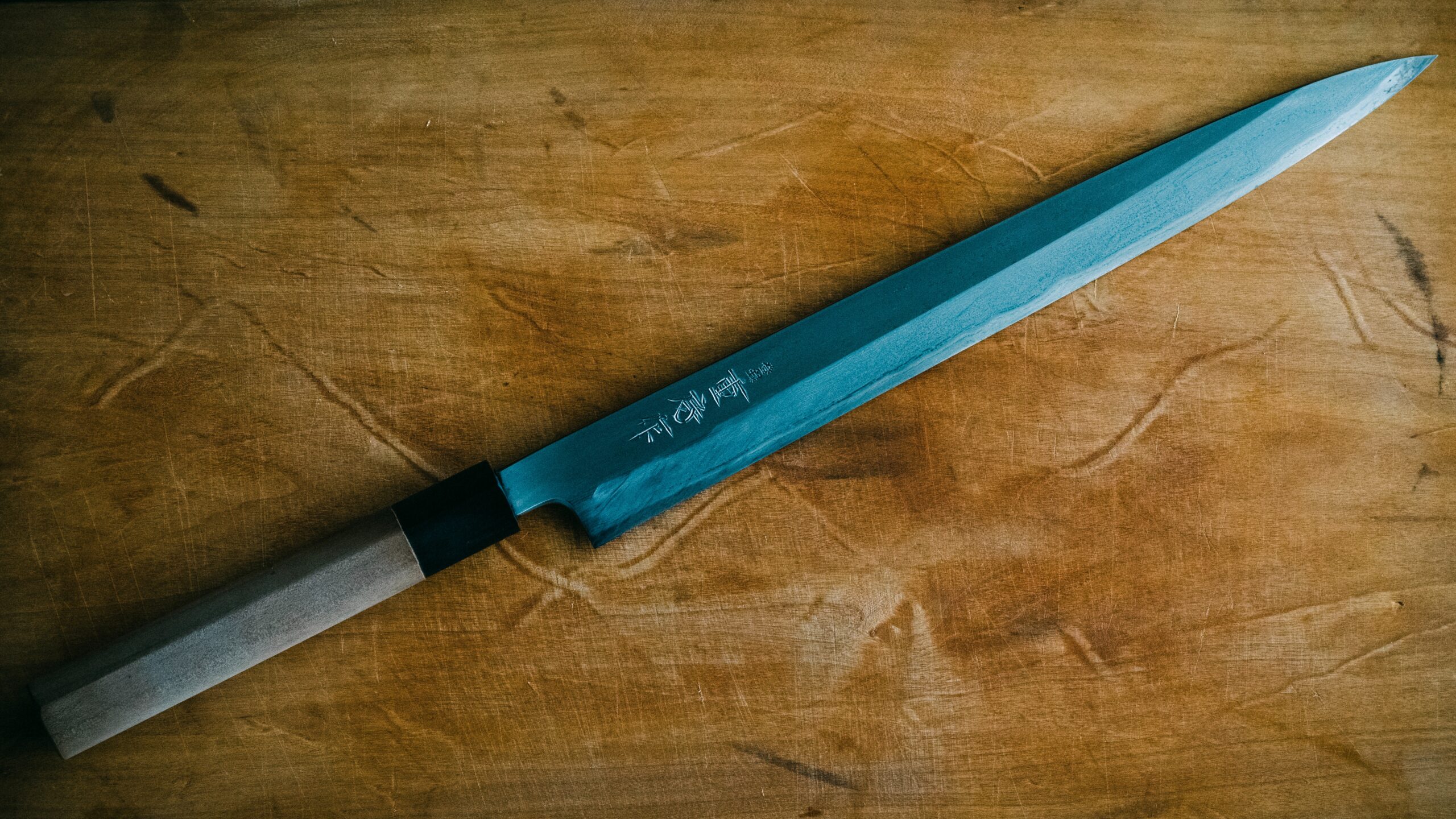The Sujihiki knife, also known as the “muscle puller”, is a commonly used tool by Japanese chefs for slicing fish and meat. Its name “Sujihiki” literally means “muscle pull” in Japanese, emphasizing the knife’s cutting function and precision.

The history of the Sujihiki knife is closely tied to Japanese culinary culture and knife-making techniques. The history of Japanese knives can be traced back to the ancient Iron Age, while the existence of the Sujihiki knife as a kitchen utensil is relatively new. However, its design and manufacture are deeply influenced by Japanese knife-making technology, which peaked in the medieval period due to the production of samurai swords (Japanese swords).
The design feature of the Sujihiki knife is that one side of the blade is concave, while the other side is slightly curved, forming a sharp tip, making the slicing of meat and fish more precise and clean. This design inspiration may come from the traditional samurai sword but was modified to meet cooking needs.

In modern times, the Sujihiki knife has become standard equipment for Japanese cuisine chefs, and can be found in many professional kitchens around the world. Its popularity reflects people’s appreciation for the delicacy, meticulousness, and professional techniques of Japanese cuisine. Although the specific origin of the Sujihiki knife may not be clear, it undoubtedly symbolizes the unique cooking culture and knife-making art of Japan.
